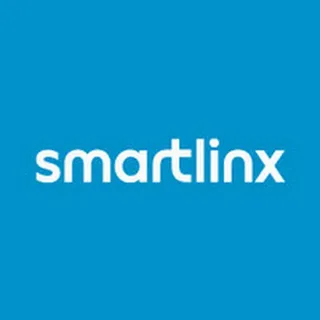In today’s business environment, workforce management is directly tied to profitability, efficiency, and employee satisfaction. Industries like healthcare, hospitality, retail, and manufacturing depend on hourly labor, often across multiple shifts and locations.
When labor isn’t tracked and scheduled accurately, it creates ripple effects: payroll errors, compliance risks, understaffed shifts, and high turnover. For managers and HR teams, these issues can consume hours every week time that could be spent improving operations.
Many companies still use Smartlinx disconnected software, or outdated systems that make scheduling and time tracking a reactive, error-prone process. But to remain competitive, especially in labor-intensive sectors, organizations need a smarter approach.
Why Basic Tools Are No Longer Enough
Manual processes are prone to mistakes. A missed time punch or an incorrectly calculated overtime hour may seem small but can lead to legal risk or dissatisfied employees. With state and federal labor laws growing stricter and workforce expectations changing, companies need tools that support visibility, compliance, and accountability.
Workforce management systems must do more than schedule shifts. They must support real-time adjustments, track actual hours worked, monitor compliance metrics, and integrate seamlessly with payroll systems. That’s where automation, data, and centralized control become essential.
How Smartlinx Helps Solve Common Labor Challenges
Smartlinx is a workforce management platform built to address modern labor challenges. It combines employee scheduling, time and attendance tracking, compliance monitoring, and payroll integration into one system that works in real time.
In one case study, a senior care provider with over 1,500 employees adopted Smartlinx to replace a mix of manual and outdated tools. Within three months, they reported a 22 percent reduction in overtime costs and a 60 percent drop in payroll errors. Administrative workload fell by over 35 percent.
At the center of these outcomes was Smartlinx. By unifying labor data and automating key processes, the platform helped the company shift from reactive problem-solving to proactive workforce planning. Supervisors gained visibility into shift coverage, employees accessed their schedules from mobile devices, and payroll was processed more accurately, using live data.
Smartlinx Core Features and How They Work
Smarter Scheduling Based on Real-Time Conditions
Smartlinx gives managers the ability to create and update shift schedules with instant visibility into employee availability, compliance rules, and cost implications. It automatically flags conflicts such as overtime risks or rest period violations, reducing guesswork and improving coverage.
Accurate Time and Attendance Tracking
Employees can clock in and out using biometric, mobile, or desktop methods. All punches are recorded in real time and matched against scheduled shifts. This improves data accuracy and reduces the need for manual timesheet corrections.
Seamless Payroll Integration
Smartlinx connects directly to payroll systems, allowing approved time data to flow without re-entry. This eliminates errors caused by duplicate entry and ensures employees are paid for the exact hours worked. Payroll teams save time, and disputes are significantly reduced.
Compliance Monitoring Built In
Labor laws vary by state, and Smartlinx helps ensure companies remain compliant. It tracks ACA eligibility, monitors overtime thresholds, and enforces required rest and meal periods. Alerts are sent to managers when a rule is about to be broken, helping avoid penalties.
Mobile Access for Employees
Smartlinx includes a mobile-friendly interface for employees to view their schedules, check hours worked, request time off, or pick up available shifts. This self-service access improves transparency and reduces routine HR queries.
Real Business Results Backed by Data
A multi-site retail chain implemented Smartlinx after struggling with missed shifts and payroll corrections. Within six weeks, they cut payroll processing time in half and reduced unscheduled absenteeism by 19 percent. The system’s live dashboards helped store managers better align staffing with peak customer hours.
A regional long-term care operator used Smartlinx to control labor costs across 30 locations. Before implementation, their team spent over 10 hours each week per facility resolving timecard issues. After Smartlinx, that dropped to under 3 hours weekly. They also improved audit readiness by consolidating time records and compliance tracking in one place.
These aren’t just software upgrades they are changes that translate to financial savings, improved morale, and more consistent service delivery.
Departments That Benefit From Smartlinx
HR and Payroll Teams
Human Resources professionals benefit from centralized data, simplified reporting, and faster approvals. Payroll accuracy improves when Smartlinx reduces manual interventions.
Operations Managers
Managers gain real-time control over labor allocation and shift coverage. They can fill last-minute gaps, prevent overtime blowouts, and keep staffing levels in line with demand.
Finance Leaders
Smartlinx provides labor cost analytics that help finance teams forecast, plan, and stay within budget.
Employees
Workers benefit from clarity. They know their schedule, they can request changes, and they receive accurate pay for time worked. This leads to better retention and fewer disputes.
Why Smartlinx Is the Right Fit for Today’s Labor Needs
Many workforce systems offer basic features. What makes Smartlinx stand out is its focus on connecting daily labor activity to business goals. It helps companies reduce unnecessary labor costs, prevent compliance violations, and simplify payroll without overwhelming teams with complexity.
For industries that rely on hourly labor and face strict compliance standards, Smartlinx offers a reliable, proven solution. It helps teams move from reactive staffing and reporting to proactive, data-driven management.
Conclusion and Action Steps
Smartlinx helps businesses reduce labor costs, increase scheduling accuracy, and stay compliant with labor regulations. Its real-time tools, mobile access, and seamless integration provide clear benefits across operations, HR, payroll, and finance.
If your organization struggles with shift gaps, overtime overruns, or manual timesheet work, Smartlinx may be the practical solution you need. Ready to explore what it can do for your team? Request a case study comparison or a step-by-step guide to get started.





